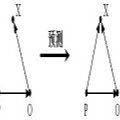Temporal Knowledge Graphs have emerged as a powerful way of not only modeling static relationships between entities but also the dynamics of how relations evolve over time. As these informational structures can be used to store information from a real-world setting, such as a news flow, predicting future graph components to a certain extent equates predicting real-world events. Most of the research in this field focuses on embedding-based methods, often leveraging convolutional neural net architectures. These solutions act as black boxes, limiting insight. In this paper, we explore an extension to an established rule-based framework, TLogic, that yields a high accuracy in combination with explainable predictions. This offers transparency and allows the end-user to critically evaluate the rules applied at the end of the prediction stage. The new rule format incorporates entity category as a key component with the purpose of limiting rule application only to relevant entities. When categories are unknown for building the graph, we propose a data-driven method to generate them with an LLM-based approach. Additionally, we investigate the choice of aggregation method for scores of retrieved entities when performing category prediction.
翻译:暂无翻译




